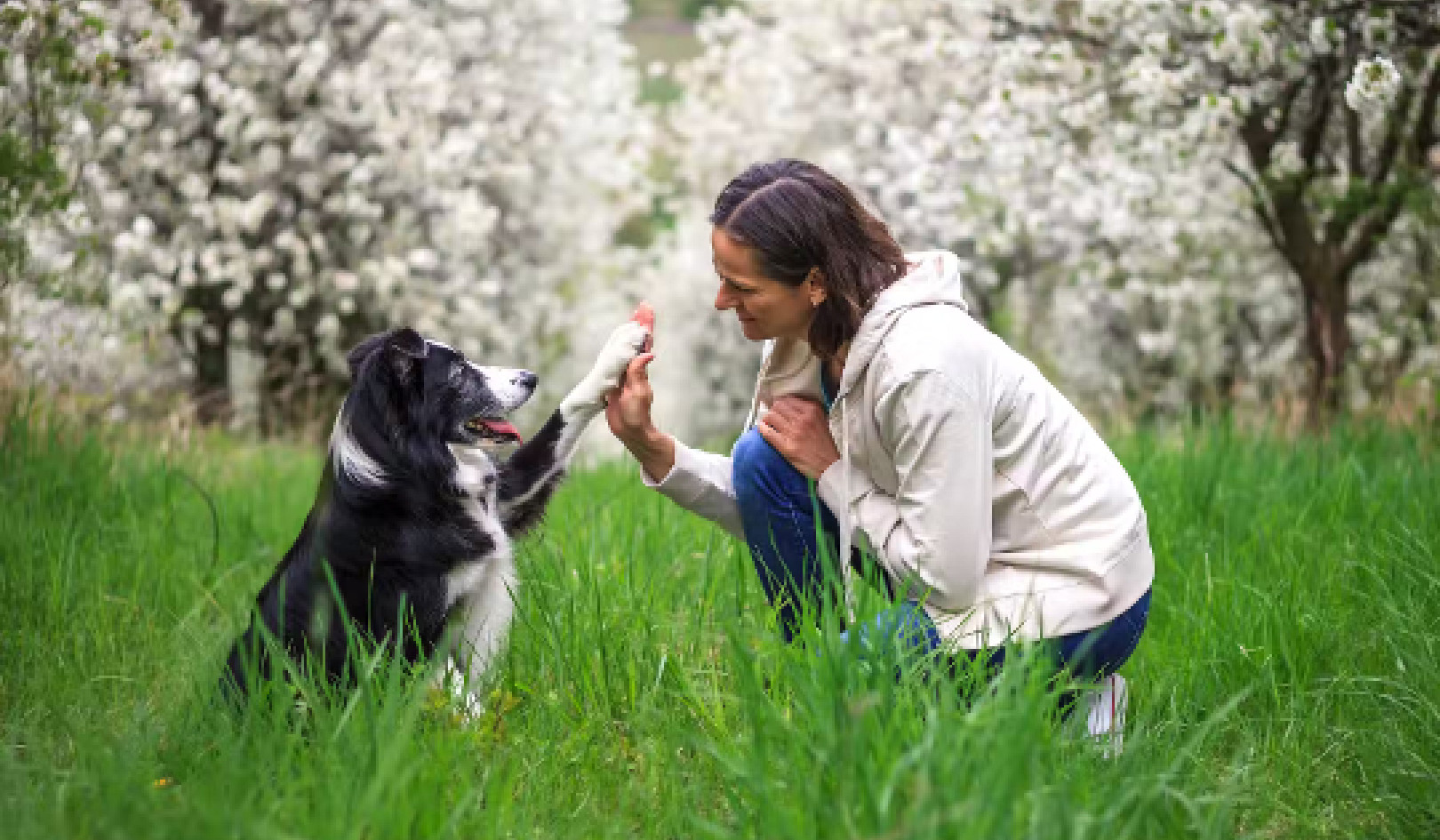
Matt Donnelly , Author provided
Dogs have a long history alongside humans, giving them an amazing ability to read human cues. Dogs also possess an incredible sense of smell, which enables them to detect diseases, such as COVID and lung cancer, in humans from odour alone. Whether dogs’ capabilities extend to detecting odours associated with psychological states has been explored far less.
When people are stressed, there are hormonal and nervous system changes that alter the kinds of odours produced by the body. My colleagues and I wanted to know if dogs can discriminate between odour samples taken from the same person before and after becoming stressed. To do this, we took ideas from the field of biomedical detection dogs (sniffer dogs in a laboratory setting) and combined these ideas with techniques used to test dogs’ perceptions of odours.
Our results are published in the journal PLOS One.
To test whether dogs could detect an odour associated with psychological stress, we attached sensors to the study participants to continuously measure their heart rate and blood pressure. Participants also rated how stressed they were feeling before and after taking part in the task.
Before the task started, participants wiped gauze on the back of their neck, placed it into a sterile glass vial, and exhaled into the vial. We then got the participants to perform a rapid mental arithmetic task to induce stress in them.
After the task, participants provided another rating of their stress and two additional sweat/breath samples.
The total time between the collection of the relaxed (pre-task) and stressed (post-task) samples was four minutes, reducing the likelihood that the participants experienced changes other than the onset of stress.
We only included samples in the study if the person reported finding the task stressful, and both their heart rate and blood pressure had increased during the task. We presented samples from 36 people to the dogs.
The training process
The dogs included in this study were pets, volunteered by their owners, who were trained using positive reinforcement by researchers in a laboratory once a week. Before formal data collection began, dogs were taught to communicate that they were picking a sample by standing and freezing above it for several seconds or sitting in front of it – we called this their “alert behaviour”.
The dogs were then taught a matching game, where they learned to discriminate between samples with known odour differences. Once it was established that the dogs were successful at this, they were ready to be tested.
At testing, we tasked the dogs with discriminating between a person’s samples taken before and after the arithmetic task. To teach the dogs what odour they should be looking for in each testing session, they were first shown the person’s stress sweat/breath sample alongside two “control samples” – clean gauze in glass vials with no sweat or breath.
The dogs were allowed to sniff all three samples and were rewarded for alerting the researchers to the sweat/breath sample.
After ten exposures, a second breath/sweat sample was added to the line-up: the same person’s relaxed sample. Here began the test of discrimination, which took place over the next 20 trials. It was the dogs’ job to communicate, through their alert behaviour, which sample they perceived as the same as the one shown to them in the previous ten trials, that is, which sample smelled like the stress sample. Because dogs might use other information to help them make a choice, we included both visual and odour controls.
If these two odours smell the same to the dog, we would expect them to pick either by chance. If the two odours smell different, they would be able to consistently find the odour first presented to them: the stress odour. Each sample set from participants was used only once, so the dogs saw samples from a different person during each session.
From the very first time the dogs were exposed to these samples, they perceived the samples as smelling different. The dogs correctly chose the stress sample in 94% of 720 trials, showing that the participants’ psychological experience of the arithmetic task had resulted in their body emitting odours in their breath and sweat that the dogs could detect.
It should be noted that this study does not determine whether the dogs perceived the stress samples as reflecting a negative emotional state. It is likely that in a real-life setting dogs use a variety of contextual cues, such as our body language, tone of voice, or breathing rate, to help them understand a situation. However, the results provide firm evidence that odour is also a component that dogs can pick up on.
Establishing that dogs can detect an odour associated with human stress provides deeper knowledge of the human-dog relationship and adds to our understanding of how dogs perceive and interact with human psychological states. This knowledge could also be useful for the training of anxiety and PTSD service dogs that are currently trained to respond predominantly to visual cues.![]()
About The Author
Clara Wilson, PhD Candidate, Psychology, Queen's University Belfast
This article is republished from The Conversation under a Creative Commons license. Read the original article.
Books on Pets from Amazon's Best Sellers list
"The Beginner's Guide to Dog Agility"
by Laurie Leach
This book is a comprehensive guide to dog agility, including training techniques, equipment, and competition rules. The book includes step-by-step instructions for training and competing in agility, as well as advice for selecting the right dog and equipment.
Click for more info or to order
"Zak George's Dog Training Revolution: The Complete Guide to Raising the Perfect Pet with Love"
by Zak George and Dina Roth Port
In this book, Zak George offers a comprehensive guide to dog training, including positive reinforcement techniques and advice for addressing common behavior issues. The book also includes information on selecting the right dog and preparing for the arrival of a new pet.
Click for more info or to order
"The Genius of Dogs: How Dogs Are Smarter than You Think"
by Brian Hare and Vanessa Woods
In this book, authors Brian Hare and Vanessa Woods explore the cognitive abilities of dogs and their unique relationship with humans. The book includes information on the science behind dog intelligence, as well as tips for enhancing the bond between dogs and their owners.
Click for more info or to order
"The Happy Puppy Handbook: Your Definitive Guide to Puppy Care and Early Training"
by Pippa Mattinson
This book is a comprehensive guide to puppy care and early training, including advice for selecting the right puppy, training techniques, and health and nutrition information. The book also includes tips for socializing puppies and preparing for their arrival.
Click for more info or to order

























